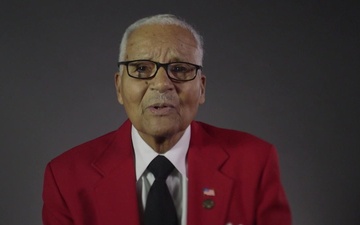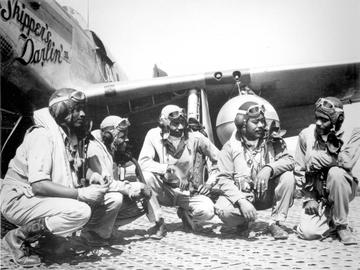Honoring Our Heritage: Tuskegee Airmen
From 1941 through 1946, nearly 1,000 young men were trained as pilots, and, after successfully completing the training, they received their commissions and silver pilot wings. The Tuskegee Airmen formed the 332nd Fighter Group which originally consisted of four fighter squadrons: the 99th, the 100th, the 301st and the 302nd. They flew over 15,000 missions/sorties in the European Theater of World War II, as well as in the North African and Mediterranean Theaters. For every pilot, there were... read more
From 1941 through 1946, nearly 1,000 young men were trained as pilots, and, after successfully completing the training, they received their commissions and silver pilot wings. The Tuskegee Airmen formed the 332nd Fighter Group which originally consisted of four fighter squadrons: the 99th, the 100th, the 301st and the 302nd. They flew over 15,000 missions/sorties in the European Theater of World War II, as well as in the North African and Mediterranean Theaters. For every pilot, there were at least ten African American men and women on the ground in supporting roles, including medical technicians, mechanics, administrative personnel and cooks. White American pilots were not allowed to fly more than 52 missions/sorties, but African American pilots often flew up to 100 missions due to lack of replacements. Aircraft flown by the Tuskegee Airmen included the P-40 ’Warhawk,’ the P-47 ’Thunderbolt,’ the P-39 ‘Airacobra’ and the plane that they are most recognized for flying, the P-51 ’Mustang.’ In fact, they painted the tails of these planes red, which led them to become known as the “Red Tails.” And, since they were not allowed to practice or fight with their white counterparts, this gave them a distinction that made them very, very proud. Their success as B-17 and B-24 bomber escorts was amazing. It has been said that, when enemy fighter pilots saw the red-tailed P-51’s, they thought twice about attacking! The Tuskegee Airmen had one of the lowest loss records of all the escort fighter groups, and their services were in high demand by all of the Allied bomber units. Sixty-six of them died in combat and thirty-three became prisoners of war (POW’s). The Tuskegee Airmen fought two wars: one against the enemy and enemy aircraft, and the other against prejudice and racism while serving in the military and when returning home to America. In 1948, President Harry S. Truman enacted Executive Order 9981, which directed equality of treatment and opportunity in all American Armed Forces, and in time, this led to the end of racial segregation in the U. S. military. In 2006, surviving members of the Tuskegee Airmen were invited to the White House and were given special commendations by President Bush. In addition, many of them were awarded the Congressional Gold Medal at a special ceremony in the U. S. Capitol Rotunda. Source: nationalmuseum.af.mil show less













